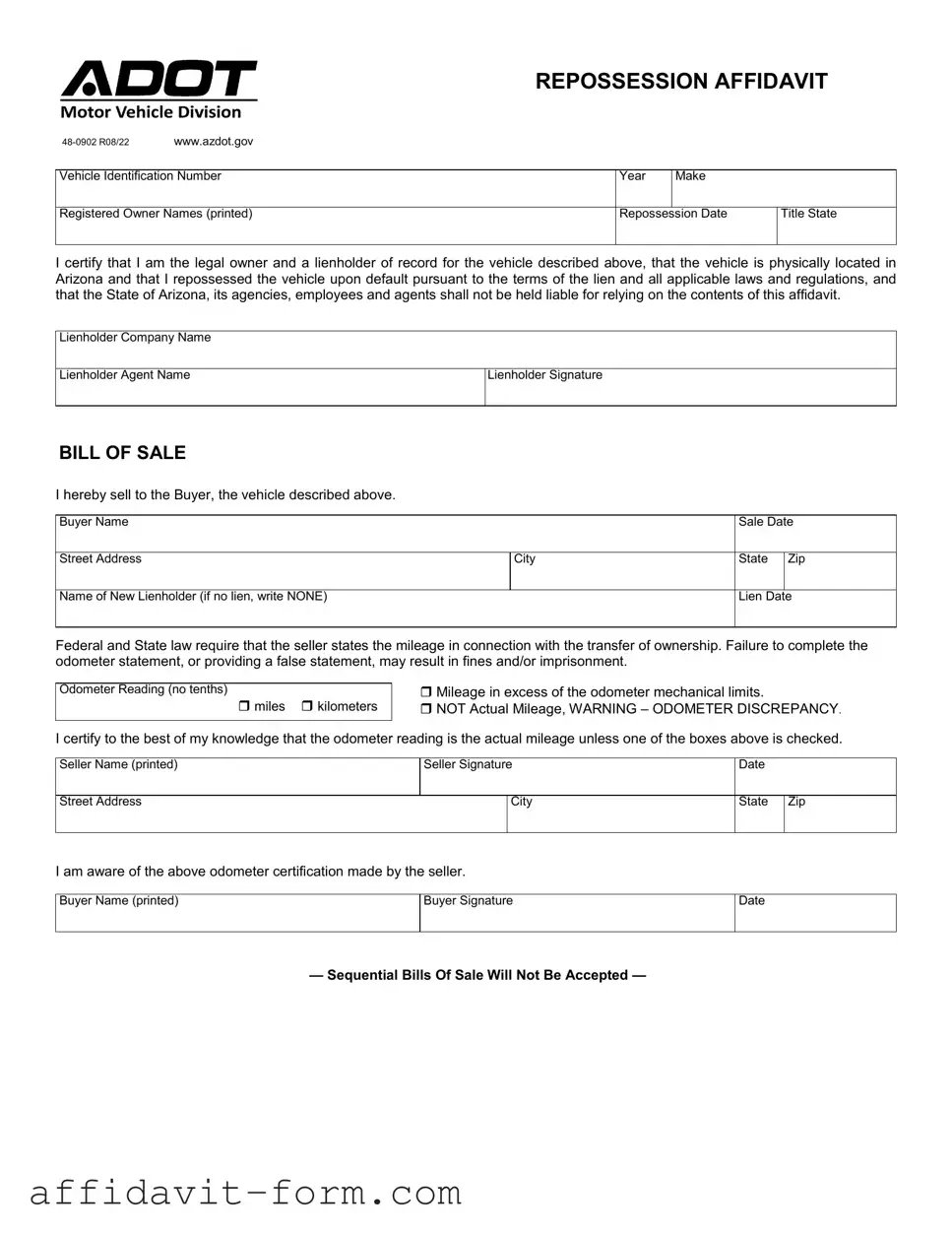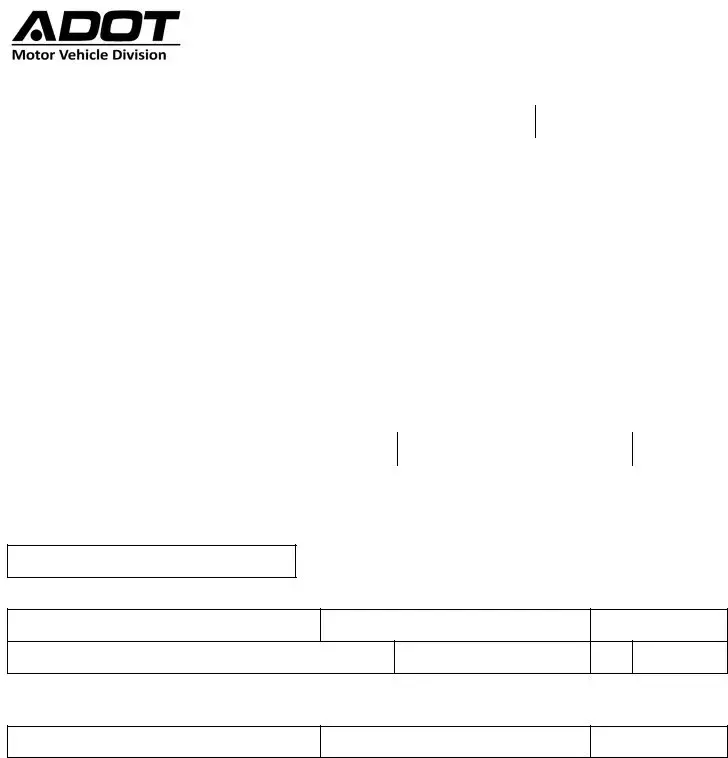In the dynamic landscape of vehicle ownership and financial agreements, the Arizona Repossession Affidavit form emerges as a critical document, serving several pivotal roles in the repossession process. Crafted under the auspices of the Vehicle Division, this comprehensive affidavit, identified by the form number 48-0902 R08/22 and available through the official website www.azdot.gov, is meticulously designed to facilitate the legal transfer of ownership following the repossession of a vehicle. It requires detailed information, including the Vehicle Identification Number, make, year, and the registered owner's names, underpinning its integrity and the legality of the repossession action. At the heart of the affidavit is the certification by the lienholder, asserting their legitimate ownership and the rightful repossession of the vehicle based on a default, aligning with Arizona's laws and regulations. Furthermore, it disclaims any liability on the part of the State of Arizona, its agencies, employees, and agents regarding the reliance on the affidavit's contents. Additionally, the document outlines the process for the sale of the repossessed vehicle, including the requirement for an odometer statement to comply with federal and state laws aimed at preventing fraud and ensuring transparency. This element underscores the affidavit’s role in maintaining the integrity of transactions involving repossessed vehicles, thereby protecting all parties involved. Given its multifaceted nature, the Arizona Repossession Affidavit form is indispensable for lienholders aiming to navigate the complex terrain of vehicle repossession with legal fortitude and clarity.

